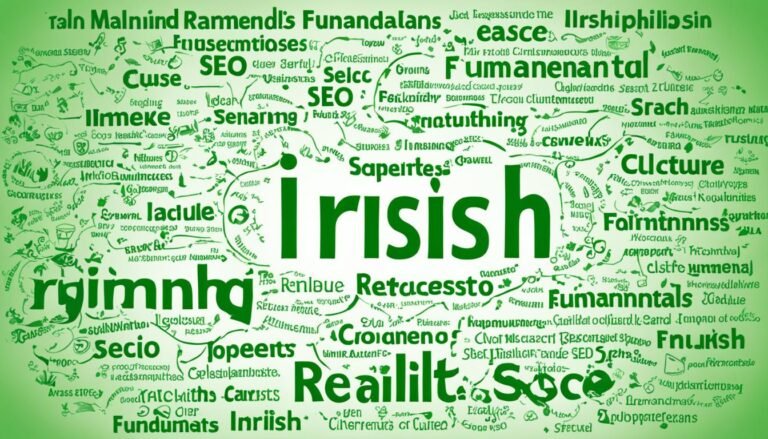Strategies for Successful Product Launches
Did you know that over 30,000 new products hit the market each year? Yet, about 95% of them fail. This shows how vital it is to have solid strategies for launching products. In today’s fast-paced market, a successful launch can make all the difference. It can lead to huge sales or damage your brand’s image.
With the right approach, companies can make sure their new products connect with customers and meet their goals. This article shares key tips and insights for launching products well. It covers everything from market research to creating memorable campaigns before launch. By planning well and using smart strategies, businesses can boost their chances of making money and building strong customer ties.
Key Takeaways
- Effective product launch strategies are crucial for minimizing risks and maximizing success.
- Conduct thorough market research to understand consumer needs and industry trends.
- Develop a unique value proposition to differentiate your product from the competition.
- Create a comprehensive launch plan that outlines clear objectives and timelines.
- Leverage multi-channel marketing for greater reach and engagement.
- Continually monitor and analyze performance to make informed adjustments post-launch.
- Utilizing influencers and promotional events can enhance visibility during the launch phase.
Understanding the Importance of a Product Launch Strategy
A well-defined product launch strategy is key to introducing new products successfully. Without one, companies might not reach their target audience or show off their products well. Using smart product launch methods helps the product get noticed and succeed. By being clear and matching with the market, brands do better during their launches.
How a Launch Strategy Influences Success
A strong launch strategy greatly affects product success. Companies with clear goals do much better at hitting sales targets. In fact, 40% more sales happen when goals are specific.
Also, having a unique selling proposition (USP) helps stand out in a crowded market. About 67% of successful launches had a clear USP. Good launch strategies focus on what customers need and look at competitors to improve marketing.
Key Benefits of Having a Well-Defined Strategy
Having a solid product launch strategy brings many benefits. It makes roles clear and keeps messages consistent across all platforms. This helps avoid risks when introducing new products.
Companies with a strategic plan do better at connecting with their audience and overcoming market challenges. In fact, 89% of successful launches had a clear marketing strategy. This shows how important planning is for engagement and sales.
Conducting Market Research and Analysis
Effective market research is key to a successful product launch. It’s vital to understand what consumers need. This helps make products that really speak to the target audience. Using different methods can give deep insights into what the market wants.
Identifying Consumer Needs
To make a product that people really want, companies need to look into what consumers like. They should find out who their main customers are through:
- Surveys and interviews
- Focus groups of potential buyers
- Customer feedback and reviews
By using these methods, companies can make products that really hit the mark. Brands like Procter & Gamble and Unilever show how knowing what consumers want can lead to success.
Analyzing Competitor Product Launches
Learning from what competitors do can be very useful. Seeing what works and what doesn’t for them helps brands find their own spot in the market. Important things to look at include:
- Pricing strategies
- Marketing campaigns employed
- Product features and messaging
This helps companies spot market gaps and chances to grow. Brands that keep an eye on competitors can make their products and plans better. This lowers the chance of a new product not doing well.
| Research Method | Type | Description |
|---|---|---|
| Surveys | Primary | Directly gather opinions from target consumers about their needs and preferences. |
| Focus Groups | Primary | In-depth discussions with a select group of consumers to gauge product concepts and features. |
| Industry Reports | Secondary | Existing data that provides insights into market trends and performance metrics. |
| Competitor Analysis | Secondary | Evaluate competitors’ products, marketing strategies, and customer feedback to identify successes and pitfalls. |
Strategies for Successful Product Launches
For a product launch to be successful, it’s key to have a unique value proposition (UVP). A strong UVP tells customers what makes your product different from others. It shows how it meets their needs, which is vital for a successful launch.
Having a clear UVP helps guide what customers decide to buy. It’s a big part of making a product stand out.
Developing a Unique Value Proposition
Creating a UVP means thinking about what your product offers that others don’t. This involves:
- Identifying Target Audience: Knowing who your product is for helps tailor your message.
- Competitive Analysis: Looking at similar products helps you see what makes yours better.
- Communicating Benefits: It’s important to explain how your product makes life better for customers.
Using the UVP in marketing makes your message stronger. It focuses on the benefits, not just what the product does. This approach grabs attention and builds interest before the launch.
Effective Timing and Launch Planning
Launching at the right time is crucial. Many companies don’t realize how important timing is. It can greatly affect how well a product does initially.
Important things to think about include:
- Market Conditions: Look at supply and demand to find the best time to launch.
- Seasonal Trends: Know when people are most likely to buy your type of product.
- Goal Setting: Set clear goals before launching to stay focused and measure success.
Adding these to your launch plan helps match your marketing with your goals. This approach boosts visibility and sets your product up for long-term success.
Creating a Memorable Pre-Launch Campaign
An impactful pre-launch campaign is key to building excitement and anticipation. It sets the stage for a successful product launch. By using smart strategies, brands can get people talking before the big day.
The Role of Teasers and Promotional Events
Teasers and events are crucial in pre-launch campaigns. They make people curious and talk about the new product. For instance, Havenly used teasers to build interest in its new service.
Captivating teasers get shared widely, increasing visibility. Promotional giveaways, like social media contests, boost brand awareness. This draws in more people and gets them excited.
Leveraging Influencer and Partnership Marketing
Working with influencers can expand a campaign’s reach and build trust. Thinx teamed up with influencers in fashion, health, and wellness. This showed how influencer marketing can boost product promotion.
These partnerships connect with specific audiences who might find the product useful. They also open doors to new customers. Getting early media coverage and influencer support raises visibility and trust before the launch.
Building a Multi-Channel Marketing Strategy
A successful product launch needs a strong multi-channel marketing strategy. This strategy uses different platforms to increase visibility and reach more people. By using social media, content marketing, and public relations, companies can tell a unified story about their new product. This way, they make the most of their marketing budget.
Companies that do well with multi-channel marketing see a 9.5% increase in revenue each year. They also get up to 73.8% better use of their marketing budget by checking how each channel performs.
Utilizing Social Media and Content Marketing
Social media is key to a great product launch. It lets businesses talk directly to customers and share content that grabs their attention. Video marketing can boost conversion rates by up to 86%, making it crucial to use engaging visuals.
Content marketing is also cost-effective, 62% cheaper than traditional methods but bringing in three times as many leads. This helps businesses have a strong online presence.
Engagement through Email Marketing and PR
Email marketing is a strong part of a multi-channel strategy. Companies get an average return of $42 for every dollar spent on it. To get the most out of it, it’s important to target the right audience and make messages personal.
Public relations is also key, boosting product visibility through media and influencer partnerships. Checking how well these strategies work helps keep the message consistent across all channels. This leads to more customer interaction.
Post-Launch Analysis and Adjustments
After launching a product, it’s key to keep the momentum going. This means watching how the market responds to your product closely. You need to keep an eye on metrics that show customer interest, sales, and how the brand is doing overall.
Monitoring Key Performance Indicators (KPIs)
Setting up important KPIs helps you see how your product is doing. Look at things like conversion rates, website visits, and how many new customers you get. Having dashboards ready to track these metrics helps you make smart choices.
Here are some key KPIs to watch:
| Metric | Description | Importance |
|---|---|---|
| Conversion Rate | Percentage of visitors who take a desired action | Shows how well marketing works |
| Website Traffic | Number of visitors to the website | Tells you how many people are interested |
| Engagement Metrics | Likes, shares, comments on social media | Shows how customers interact with the brand |
Gathering Customer Feedback for Continuous Improvement
Listening to what customers say is vital for making your product and marketing better. Talk to customers through social media and email to keep the lines open. Use what they say to make smart choices. Here are ways to get and use feedback:
- Do surveys and polls to see how happy customers are.
- Ask for online reviews to build trust.
- Watch social media for what people are saying about your product.
- Look at customer support questions to find common issues.
Conclusion
Launching a product successfully is key for businesses in today’s competitive world. It starts with making good product launch strategies and planning well. Steve Jobs said that hitting a home run with the first product is great, but knowing why is even more important for future launches.
Learning and being adaptable is crucial after the launch. Listening to customer feedback and testing ideas early can greatly improve a product’s success. With most new products failing, it’s smart to spend wisely and have a strong product plan. This helps set clear goals and keeps teams on the same page, leading to success.
Email marketing is also very powerful, bringing back 42 times what it costs. Using email well in a product launch can really boost engagement and reach. Lessons from the first product can help with future ones, leading to growth and staying relevant in the market. Staying focused on clear strategies helps businesses overcome challenges and grab new chances.
Source Links
- Product Launch Strategy: A Guide for Success | Productboard
- Maven: The Product Launch Strategy: How to Stand Out in a Competitive Market
- How to create a successful product launch that drives sales
- The Ultimate Guide to Crafting a Successful Product Launch Strategy
- Understanding the Importance of Product Launch Strategy
- Council Post: A Successful Product Launch Starts With The Right Marketing Research
- Market Research for Launching New Products: A Step-by-Step Guide
- Market Research For New Product Development
- Council Post: To-Do List For A Successful Product Launch
- 7 Strategies for Product Launch Success
- 10 Best Pre-Launch Marketing Tactics To Try (2024) – Shopify
- 11 Pre-Launch Marketing Strategies and Ideas: Upreports’ Recommendations
- 8 Product Launch Strategies to Standout in the Market | Swagup Blog
- Building a High-Performing Multi-Channel Marketing Strategy
- Coordinating Multi-Channel Marketing Strategies for Success
- 4 Ways to Create a Winning Multi-Channel Marketing Strategy
- Strategies for After a Product Launch
- 5 Steps to Executing the Perfect Post-Launch Strategy
- When to Launch Your Second Product | HubSpot for Startups
- 19 Product Launch Email Examples That Drove Massive Sales (+ Templates)
- Product Strategy








